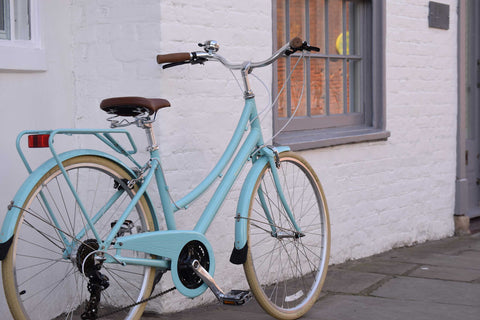Everything You Need To Know About Dutch Bikes
Dutch bikes are utility-driven and designed to suit almost every rider’s need. Most feature standard amenities like a bell, storage rack, and kickstand, among others. This makes them the perfect all-purpose bikes for commuting or running errands. And there’s more to learn about them!
A Brief History
Dutch bikes, also known as Netherlands bikes, are renowned for their practicality. Interestingly, despite their name, they weren’t invented nor developed by the Dutch. Instead, these bicycles drew inspiration from early English models. It was also rare for them to have gears prior to World War II.
Over time, Dutch bikes have been modernised while still keeping their traditional look. Their design is what makes them popular today!
The Design of Dutch Bikes
Dutch bikes have taller frames that give them an upright or “sit-up” style for a comfortable riding position. The defining feature is the curved handlebar, which complements the bike’s relaxed riding style. This welcomes a change from the standard hunched position that road bikes come with.
Another factor in their popularity is their practical features. Some of those we mentioned above include mudguards, chain guards, and fenders. These contribute to the bike’s sturdiness, making it high-quality and built to last. For one, the chain guards and fenders offer protection from debris. Plus, the kickstand and rear rack provide convenience.
Of course, there are some quirks, starting with the heavier frame than the average bike. This is mostly influenced by the added extras the bike design features. The “coaster brakes” are also worth noting, which are inferior stopping-wise. They can become awful to try and come to a halt on a long steep descent.
How Do These Features Make a Difference?

(A trio of Bobbin Brownies!)
The features of a Dutch Bike make them stand out for their ease of use, functionality, and enjoyable riding experience.
- Mudguards: Mudguards help to reduce the splash-back from puddles and mud when riding. These will save your trousers or legs from getting mud splatters all over them!
- Kickstand: The kickstand is what helps your bike to stay standing or stable on the ground when you’re not using it. This is probably one of the most helpful aspects of a Dutch Bike. It saves you from awkwardly laying down your bike propping it up against a wall, or placing it into bike stands.
- Rear rack: Having a rear carrier is a massive help when it comes to carrying shopping or your belongings. It helps to ensure your eye line isn’t reduced from a basket at the front, although these are still very helpful.
- Covered chain: This feature is one of the many weatherproofing features of a Dutch Bike. It stops rain from rusting your bike chain and keeps oil off your legs or pants. Chain covers have so many benefits.
- Sit-up style: This helps to promote a better posture, reducing the risk of overuse injuries. The upright position creates a comfortable riding position for the cyclist.
Accessories Some Dutch Bikes May Not Include, But You Can Add
Dutch bicycles, as we’ve learnt, are a pretty great style of bike. It might be handy to be able to find all of the added extras available to purchase separately, in case you’d like extra.
- Bike bell: Although most Dutch bikes come with a bell, it’s always handy to know where to find new ones if you need a spare.
- Rear bike bag: You’ve got a rear bike rack with a Dutch Bike; now you just need to get a rear bike bag to match.
- Front basket: You’ve got rear bike storage, why not try some front bike storage too! With a front bike basket, it’s always handy to have plenty of places to carry your belongings.
- Bike helmet: Safety is most important when riding a bike, so don’t forget to pick up one as you make your purchase.
Round-up
Now that you know all about Dutch bikes, you’re ready to make a purchase. All that’s left to do is invest in the right vintage bike for you — shop at Bobbin for a range of options. Should you have any questions, feel free to contact us.
Up next on your reading list: Vintage Bike Style Guide






 (The Bobbin Brownie 7)
(The Bobbin Brownie 7)


